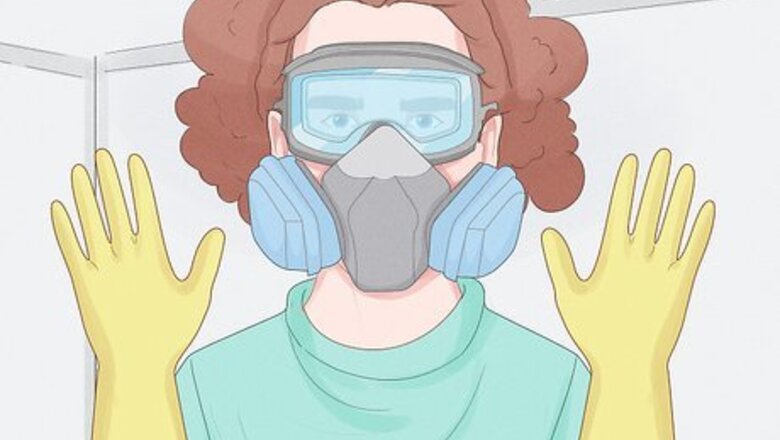
views
Prepping to Clean the Mold
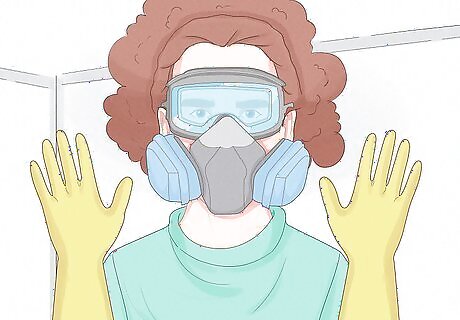
Put on rubber gloves, safety goggles, and an air mask. Mold spores can be very harmful to your health, especially if they get into your lungs. To prevent this, whenever cleaning mold you should wear an air mask, rubber gloves, and safety goggles without air vents. Due to the especially harmful effects of spores on the lungs, a N95 mask should be used. These can be bought at most hardware stores. If you are allergic to mold or mold sensitive, cover as much of your skin as possible. Wear a long sleeve shirt and coveralls, in this case.
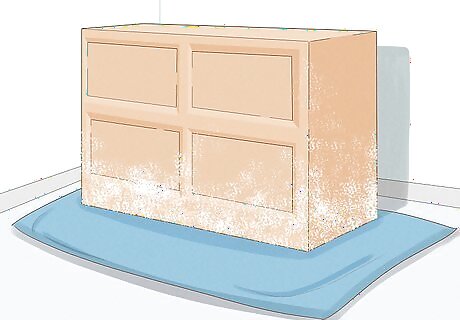
Prevent the spread of mold spores by cleaning furniture outdoors. If you don't have any other options, you may clean mold from furniture inside, though you should open windows before starting. During the cleaning process you might accidentally spread mold spores. To prevent mold from spreading to other pieces of furniture or parts of your house, clean outdoors. If you move the furniture outside, slit a garbage bag or two and tape the bag(s) around the furniture. This will prevent the spread of spores when transporting the furniture through your house. Many cleaning agents, like bleach, give off harmful fumes. At minimum, you should clean in a well-ventilated area.
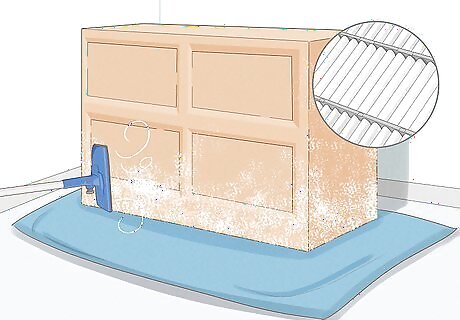
Vacuum the areas with mold. A vacuum with an arm attachment and a HEPA filter will suck up loose spores along with dust and dirt. Pass the vacuum slowly over moldy areas several times. When emptying the bag or canister of the vacuum, do so outside and into a plastic bag. Seal the bag tightly and throw it away.
Cleaning Light Mold
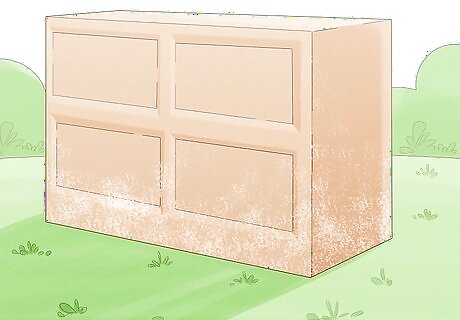
Fight very light mold with sunlight. Very light mold and musty smells can often be eliminated by airing your furniture out in sunlight. Position the furniture outside in the early morning, after the dew has evaporated (if there is any). Bring the furniture back inside at sunset. Repeat this for another day or two if necessary. Even when dealing with light mold, be sure you wear gloves, an air mask, and googles. Light mold still produces harmful spores. Mold thrives on moisture. If your home climate is humid, place your furniture in a small room with a dehumidifier for similar results to a sunlight cleaning. To improve the mold fighting power of the sunlight, mix equal parts water and white vinegar and lightly spray the furniture in the morning when placing it outside.
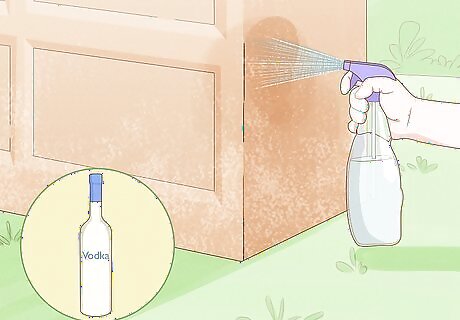
Mist light mold with vodka. Light mold, or mold that resisted a sunlight cleaning, can be handled with a spray bottle and cheap vodka. Add the vodka to the spray bottle and mist the whole piece of furniture. Allow it to air dry in direct sunlight for best results. Wood that is painted or stained isn't likely to have been penetrated below the surface by the mold. In these cases, mild cleaners should work.
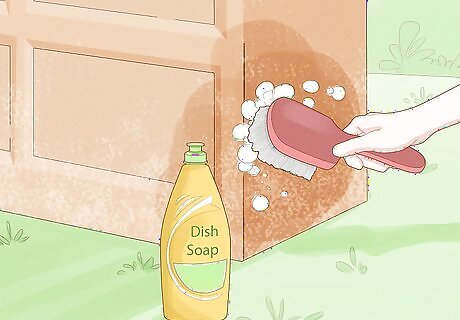
Scrub away heavier mold with dish soap and a soft bristle brush. Mold that withstood sunlight and vodka can often be removed with a mild household detergent. Mix dish soap in a bucket of warm water and gently scrub moldy areas with a soft bristle brush with a circular motion. When finished cleaning, wipe the surface of your furniture with a damp towel. If no mold remains, wipe the wood once more with a dry rag. If mold remains, repeat this process. Before doing this, you should try brushing an out of sight area on the furniture with the solution first. Some brushes may damage certain finishes.
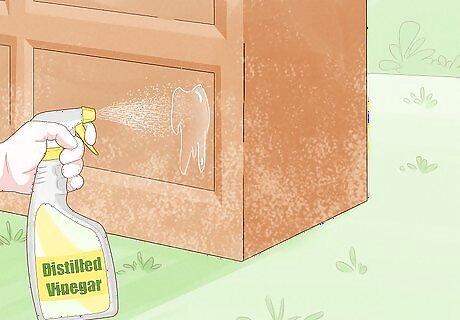
Opt for distilled vinegar when dish soap fails. Distilled white vinegar is an excellent mold killing agent. Should dish soap be too weak to remove the mold, add vinegar to a spray bottle. Spray the furniture thoroughly with the vinegar. Wait about an hour, then wipe the surface with a damp cloth. Reapply the vinegar again in this fashion if necessary. Wipe the wood thoroughly with a dry rag when the mold is removed.
Removing Stubborn Mold
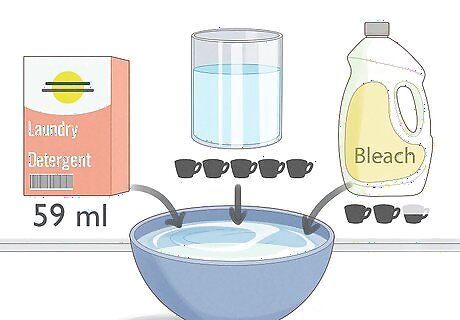
Mix a bleach solution for stubborn mold. In a bucket, mix together a household detergent, like dish soap, bleach, and water. Use a quarter cup (59 ml) of detergent, 2½ cups (591 ml) of bleach, and 5 cups (1.2 L) of water. Stir the solution with a utensil to evenly distribute the ingredients. Only mold on the surface of your wooden furniture will be removed by bleach alone. Mold that has sunk roots into the wood will require a surfactant added, like detergent. Bleach can lighten or completely whiten the colors of some dyed cloth, like clothing or carpet. Take care when handling bleach, and consider wearing a smock or clothes you don't mind throwing away.
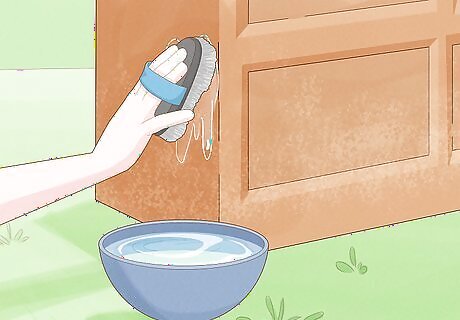
Apply the bleach solution to the furniture. Dip a stiff bristle brush or a scrub sponge into your bleach solution. Use moderate pressure and move your cleaning tool in circles as you clean. After thoroughly cleaning moldy areas, allow the furniture to air dry. Repeat this process a second time if necessary. For best results, move the furniture outside, clean it as described with the bleach solution, and then allow it to air dry in the sunshine. Using a stiff bristle brush on wooden furniture could damage its finish. If this happens to your furniture, you'll have to refinish the wood. If the bleach solution does not completely remove the mold, its roots may be sunk too deeply in the wood to be removed by cleaning agents alone.
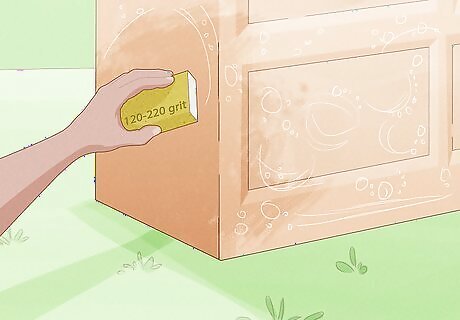
Sand off solution resistant mold. Use a fine grit (120 to 220 rating) sandpaper to lightly sand the moldy areas. Sand while the wood is still damp to prevent spores from spreading. Clean sanded areas with the bleach solution after sanding and air dry the furniture. Even lightly sanding finished wood will cause damage to the finish and require refinishing once the mold is removed.




















Comments
0 comment